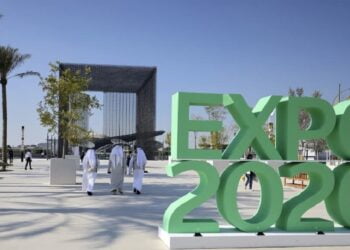Sayyed Hassan Nasrallah was one of the most powerful politicians in the entire Arab world who left a lasting impact on modern Lebanon, the Arab-Israel conflict and the whole region.
This Friday, Israel carried out a massive airstrike in south Beirut, a deadly attack that killed Sayyed Hassan Nasrallah, the secretary-general of the Hezbollah group in Lebanon. As the most influential political figure in Lebanon, Nasrallah’s death could be considered one of the most important incidents of 2024 that can be remembered for years. But who was this Hassan Nasrallah?
The 64-year-old Nasrallah was born in 1960 to a poor Shia family in Sharshabouk, a deprived area of east Beirut’s Karantina. In his early years of life, he showed huge interest in religion and was inspired by Sayyed Musa Sadr, an Iranian-born imam of Lebanese descent. When he was only 25 years old, Nasrallah became head of Hezbollah’s executive council and a member of its shura council in 1985.
A new leader for Hezbollah
When in February 1992 then-Hezbollah’s secretary general Abbas al-Musawi, his wife and his child were assassinated in an Israeli air strike, it was a moment for the young Nasrallah to show how capable and full of potential he could be. After al-Musawi’s death, Nasrallah replaced him and became the new secretary general for Hezbollah. Speaking at his funeral, Nasrallah said: “We will continue this path… even if we are martyred, all of us and our houses demolished over our heads, we will not abandon the choice of the Islamic Resistance.”
It was under Nasrallah and his leadership that Hezbollah could acquire longer-range rockets, allowing the group to target more areas in northern Israel. Politically, it was also during Nasrallah’s leadership that Hezbollah could grow from a local armed movement to the largest political party in Lebanon’s modern history.
In the 2018 parliamentary elections, for example, Hezbollah managed to win more than 340,000 preferential votes, the most for any party in Lebanon since the day the country claimed its independence from France in 1943.
Hezbollah, the most powerful armed organization in the world
It was back in October 2021 that during a public speech, Nasrallah announced that Hezbollah had 100,000 fighters, making it among the most powerful non-national armed organizations across the world. Backed by regional influence, Hezbollah has now a reputation in the Arab world: to date, it is the only armed force, national or otherwise, to have forced Israel to retreat from an Arab country.
Hezbollah is currently listed as a terrorist organization by the US, UK, Germany, Australia, Canada, the Gulf Cooperation Council and much of the Arab League; and its military wing by the EU. However, China and Russia are among world powers that maintain contact with the group.
Who will succeed Nasrallah?
Any successor to Nasrallah will come from within the ranks of Hezbollah, an institutionalized party with a clear hierarchy, but two leading figures seem to be in contention to be Nasrallah’s successor: Hashem Safieddine and Naim Qassem.
The head of Hezbollah’s executive council and a cousin of Nasrallah, Safieddine is widely thought to be in pole position to become the movement’s next secretary-general. As well as his role in leading the executive council, Safieddine is also an important member of the group’s Shura Council, and the head of its Jihadi Council.
The 71-year-old is Hezbollah’s deputy secretary-general, and has often been referred to as the movement’s “number two”. Qassem was elected deputy secretary-general in 1991, under then-Secretary-General Abbas al-Musawi, who was also assassinated by Israel. He has played an important public-facing role in Hezbollah over the years, and is also a member of the group’s Shura Council.








